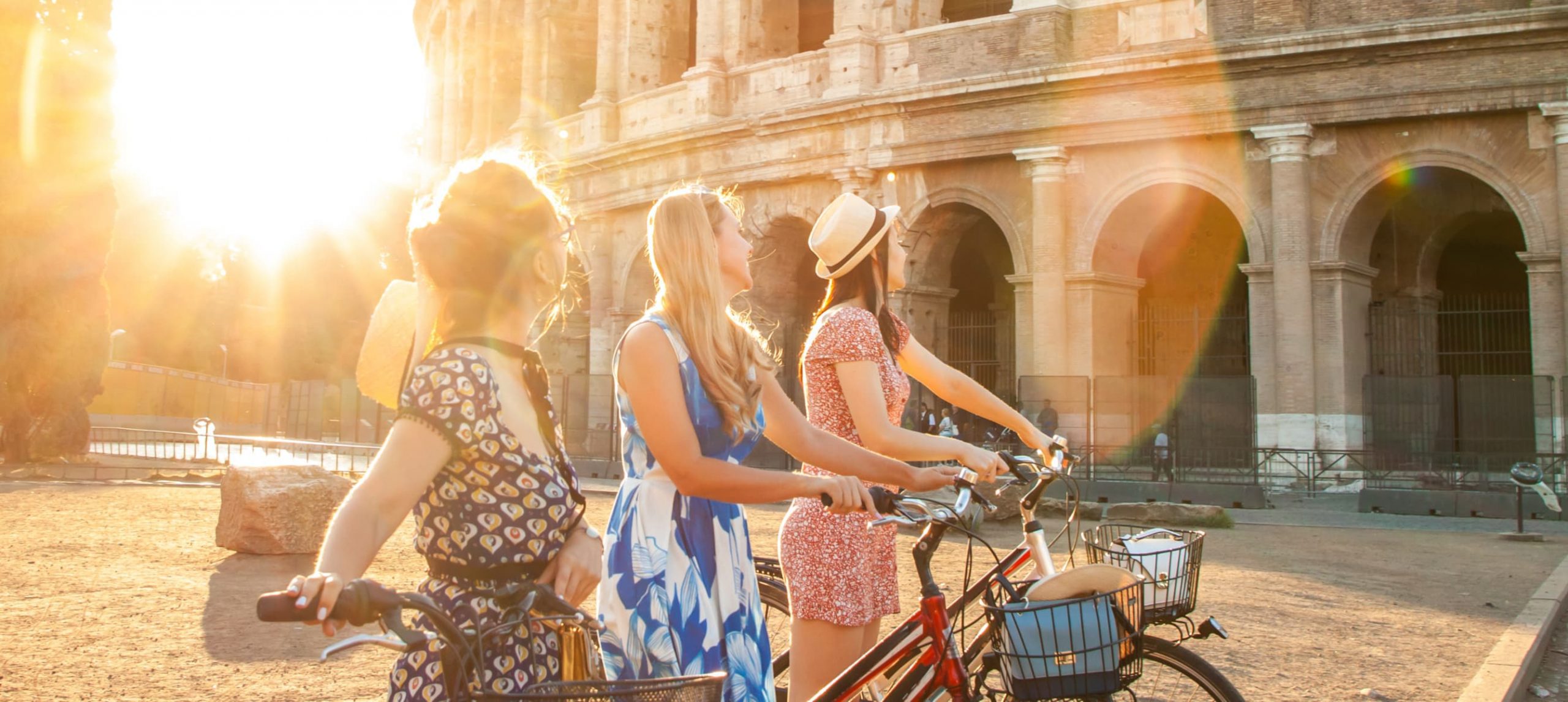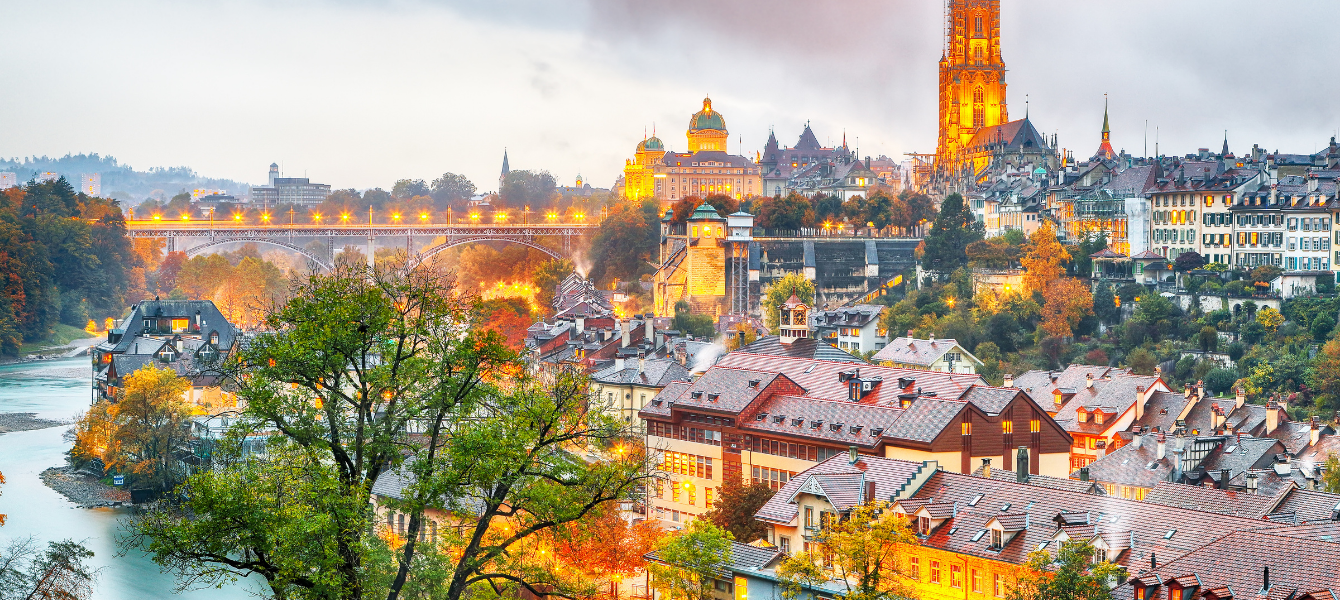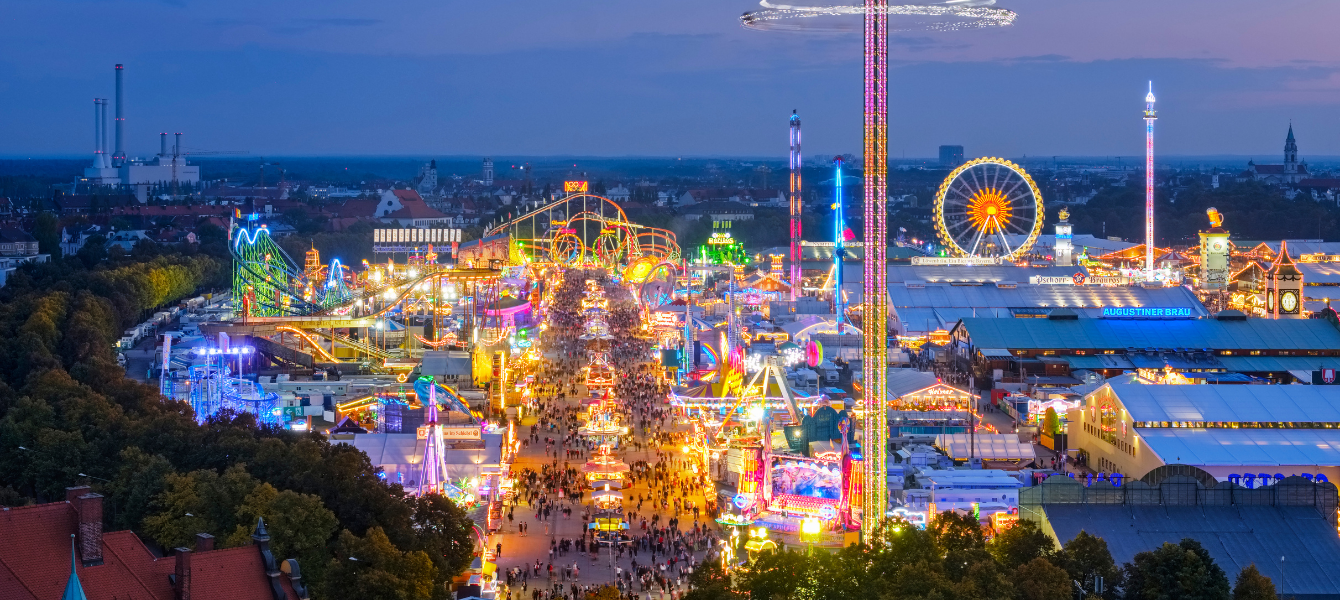The passing centuries have left Rome with a rich collection of fascinating sites that include some of the world’s most instantly recognizable landmarks: the Colosseum, the Trevi Fountain, and the Vatican, just to name a few.
Known for its architectural grandeur, age-old constructions, and tantalizing restaurants, the Eternal City has enough attractions to keep travelers busy for weeks and even years!
With such a glorious array of things to see and do, crafting a well-curated four days Rome itinerary can be challenging. But no need to worry; we’re here to help you plan a memorable trip to the Eternal City.
Below, you’ll find a suggested Rome itinerary 4 days itinerary created by our expert team of travelers. There’s something inspiring to do every day, including discovering the city’s main sights, visiting hidden gems, exploring authentic neighborhoods, and enjoying Rome’s mouth-watering food.
Have a look!
Quick Jumplinks
Rome Itinerary 4 Days: The Top Tips
- If you plan on visiting the Colosseum and The Vatican, consider buying online tickets in advance. This will allow you to save time and avoid the long lines, especially during the high tourist season;
- Deciding where to stay in Rome is crucial, especially if you have a short amount to discover the city. Here are the best Places To Stay In Rome, Italy, that’ll provide you with a cozy and memorable stay in the city;
- Whether you have a week or only have four days in Rome, we recommend getting acquainted with the city’s transportation options in advance. That way, you’ll be able to navigate around the Italian capital easily without the fear of getting lost. Here’s a guide to transportation in Rome, which is guaranteed to help you;
- Last but not least, check out this 4 day Rome itinerary, and plan the trip of your dreams!
4 days in Rome itinerary | Day 1: The Wonders Of Ancient Rome
Here is the Rome itinerary 4 days to guide you through the must-see sights and hidden gems that make Rome a truly timeless destination. Let’s dive into a captivating itinerary that will make your time in Rome extraordinary.
Colosseum
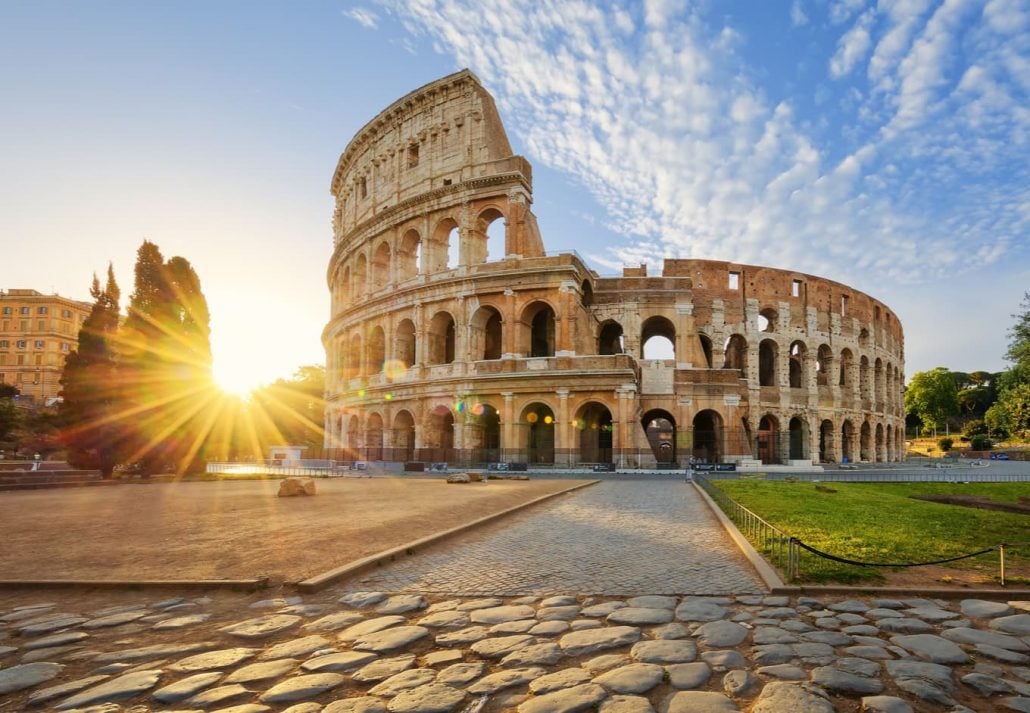
| 📍 Address | Piazza del Colosseo, 1. Get Directions |
| 🚉 Getting There | Take Line B to Colosseo Station |
| 🤑 Ticket Price | €18 per person |
| ⏰ Suggested Duration | 1-3 hours |
One of the best ways of starting your trip to Rome is by visiting the Colosseum. A tour of this monumental amphitheater will take you on a journey through time and give you a taste of Rome’s fascinating history.
Commissioned nearly 2,000 years ago by Emperor Vespasian of the Flavian as a gift to the Roman people, this massive amphitheater — the largest ever built in the world — hosted the wildest public events. At the time, more than 50,000 spectators used to visit the Colosseum to watch gruesome gladiator combats, bloody animal fights, and other spectacles.
The Colosseum fell into neglect after, but due to its historical significance, it is often considered one of the best attractions in Rome.
Tip: Consider taking a guided arena floor tour of the Colosseum. This will give you access to the building through the “Gladiator’s Gate,” a side entrance formerly used by gladiators, usually restricted to visitors.
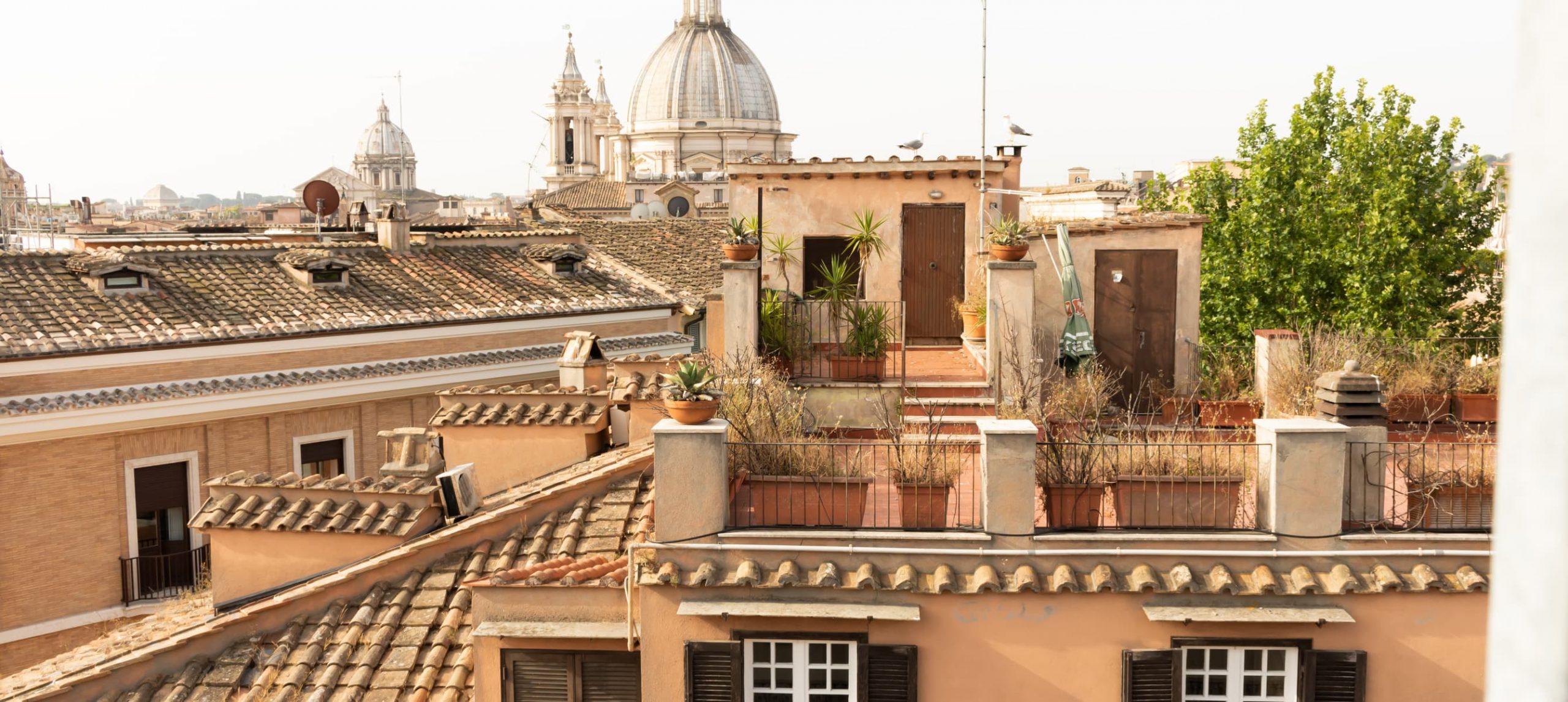 Best Rome Vacation Rentals: Unique Stays For All Budgets
Best Rome Vacation Rentals: Unique Stays For All Budgets
Palatine Hill
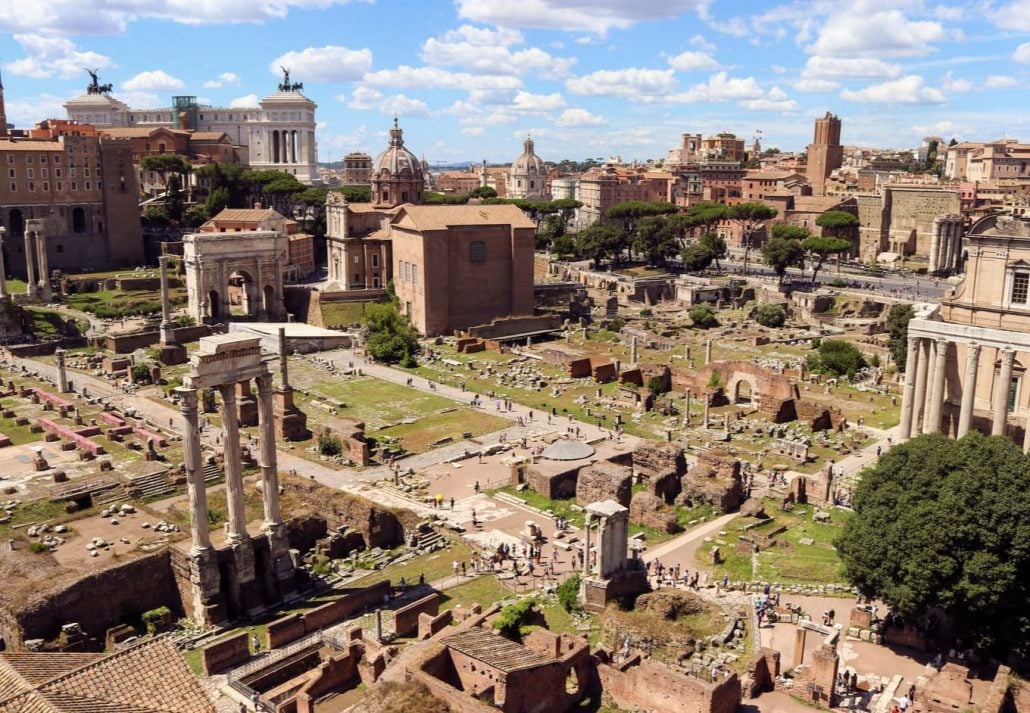
| 📍 Address | 00186 Rome. Get Directions |
| 🚉 Getting There | Take Line B to Colosseo Station |
| 🤑 Ticket Price | €18 per person |
| ⏰ Suggested Duration | 1.5 hours |
The second stop of your 4-days Rome itinerary? The history-filled Palatine Hill. Located within a short walk from the Colosseum, the site is considered to be the birthplace of the city, being inhabited since 1000 B.C.
While meandering through Palatine Hill you will come across a wide array of ruins of imperial palaces that were once created for the Roman high society.
Must-sees include the massive Palace of Domitian, emperor Domitian’s official residence, the House of Livia, known for its gorgeous frescoes dating from around 30 BCE, and Domus Augustana, the primary residence of Caesar Augustus during his reign.
Roman Forum
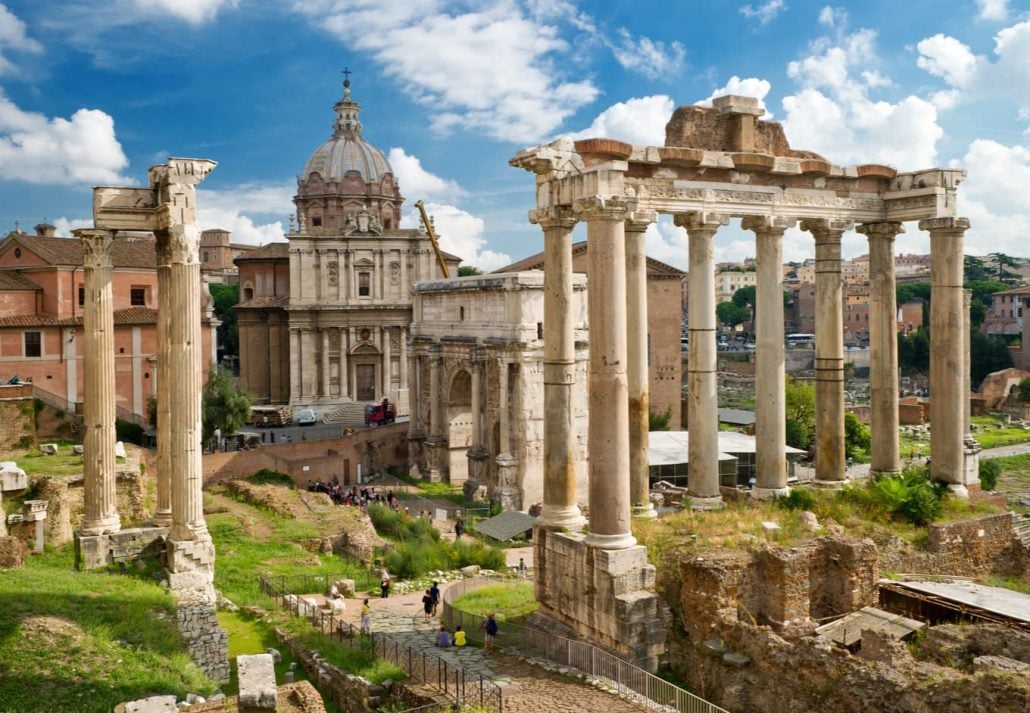
| 📍 Address | Via della Salara Vecchia, 5/6. Get Directions |
| 🚉 Getting There | Take Line B to Colosseo Station |
| 🤑 Ticket Price | €18 per person |
| ⏰ Suggested Duration | 2-3 hours |
Not far from Palatine Hill and the Colosseum lies the Roman Forum, another must-visit site for anyone seeking to dive deep into the history of ancient Rome. Once the heart of the city, the site used to harbor a variety of important buildings that hosted an array of events — from public meetings to elections and even criminal trials.
Several of the Roman Forum’s buildings were damaged throughout the years, so expect to find a collection of beautiful ruins while visiting the site.
Important surviving structures in the Roman Forum’ include the remains of The Temple of Saturn, the Temple of Castor and Pollux, the Temple of the Deified Caesar, the Mamertine Prison, and the Curia (senate house).
Roman Baths of Caracalla
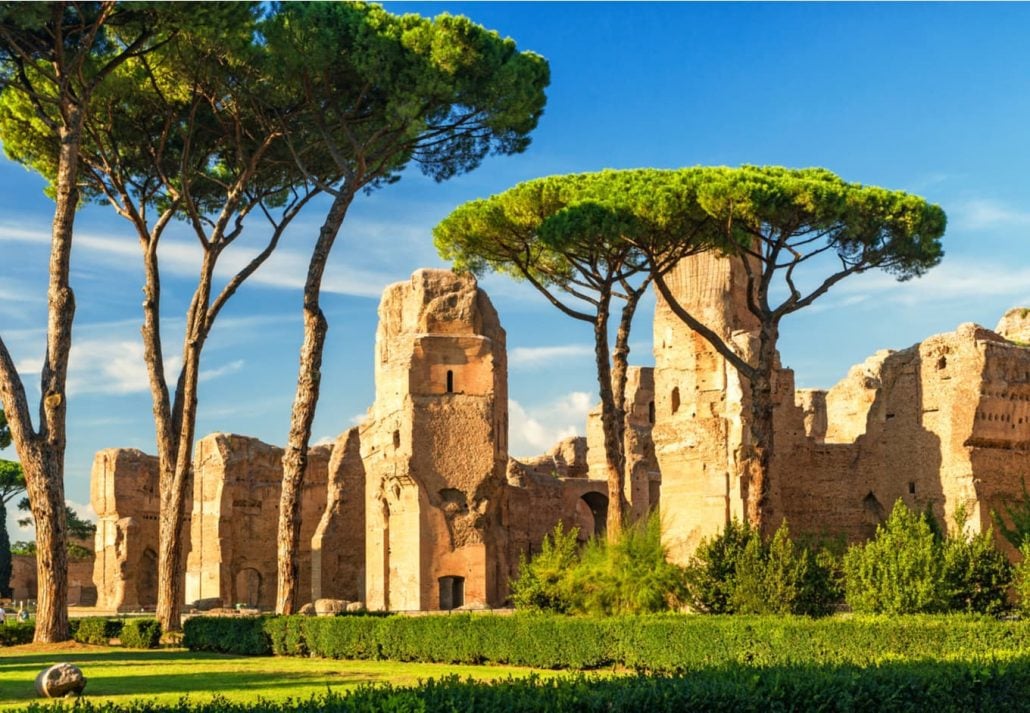
| 📍 Address | Viale delle Terme di Caracalla. Get Directions |
| 🚉 Getting There | Take Line B to Circo Massimo station. |
| 🤑 Ticket Price | €10 + |
| ⏰ Suggested Duration | 1-2 hours |
If you want to explore the lesser-known marvels of Rome, the Baths of Caracalla are the place to go.
Likely built between 212 and 216 AD under the rule of emperor Caracalla, the baths were one of the finest and biggest thermal complexes in antiquity.
This luxurious complex was designed to accommodate about 1,600 bathers and served as an important meeting point for the inhabitants of ancient Rome.
Considered a true architectural wonder, the Baths of Caracalla were made up of large open-air swimming pools, a steam room, gardens, and awe-inspiring works of art such as sculptures, mosaics, and frescoes.
Today, only the ruins remain, but be sure to visit if you want an overview of what this magical place was like in ancient times.
Day 2: Centro Storico & Villa Borghese
Campo de Fiori Market
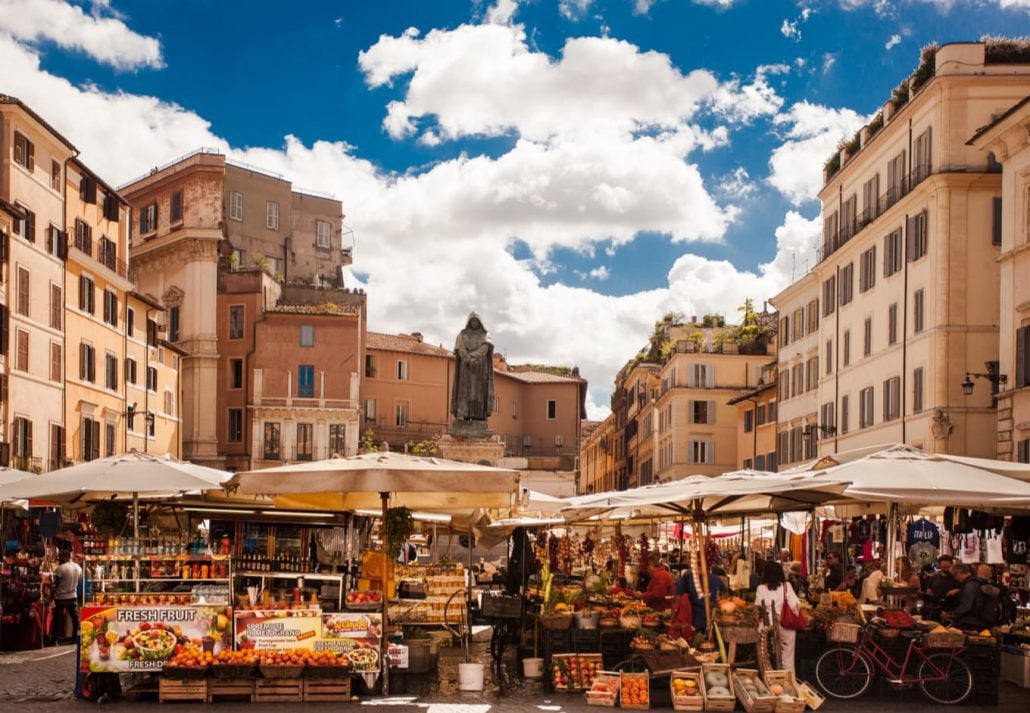
| 📍 Address | Piazza Campo de’ Fiori, 33. Get Directions |
| 🚉 Getting There | Take the metro to Piazza di Spagna (Metro A), Colosseo (metro B) or Termini (A and B). |
| 🤑 Ticket Price | Free to visit |
| ⏰ Suggested Duration | 1-2 hours |
Start off your second day by visiting the colorful Campo de’ Fiori Market. Nestled in the city center, this is considered one of the best farmer’s markets in Rome, and one of the oldest in the city.
While meandering through the market’s vibrant stalls, you’ll come across charismatic vendors selling fruit and vegetables, meat, walnuts, and fresh fish.
If you are a foodie, don’t pass up the chance to visit the market during springtime to try the famous fried artichokes, which are often regarded as one of the top foods to try in Rome.
Piazza Navona
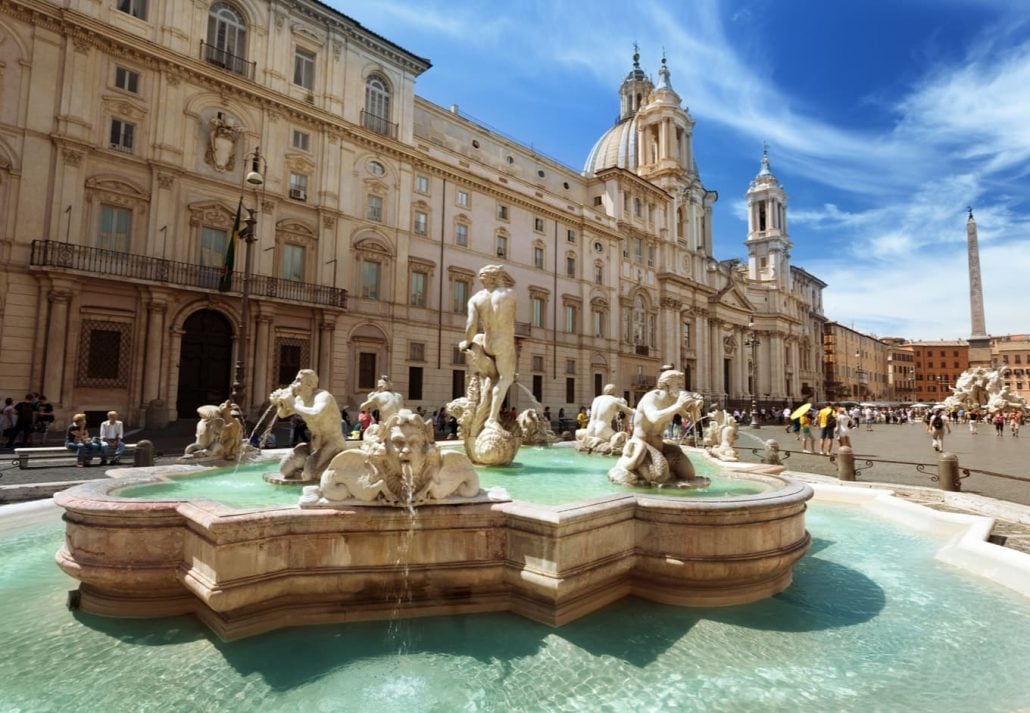
| 📍 Address | Piazza Navona, 00186. Get Directions |
| 🚉 Getting There | Take Line A to Barberini Station |
| ⏰ Suggested Duration | 2 hours |
Located a 5 min walk from Campo di Fiori, Piazza Navona is a sight to behold. This gorgeous piazza was built during the rule of emperor Titus Flavius Domitianus in 86 CE as a gift to the people of Rome, and soon it became one of the finest squares in the city.
There, you’ll find a collection of whimsical fountains — Fontana del Moro, Fontana de ‘Calderari, and the spectacular Fountain of the Four Rivers —, as well as bucket-list attractions like the 17th-century Sant’Agnese in Agone church, and Palazzo Pamphili, home to one of the most incredible private art collections in Rome.
Piazza Navona is surrounded by age-old buildings, bars, and restaurants, making it a lovely spot for a coffee break and people watching!
Trevi Fountain
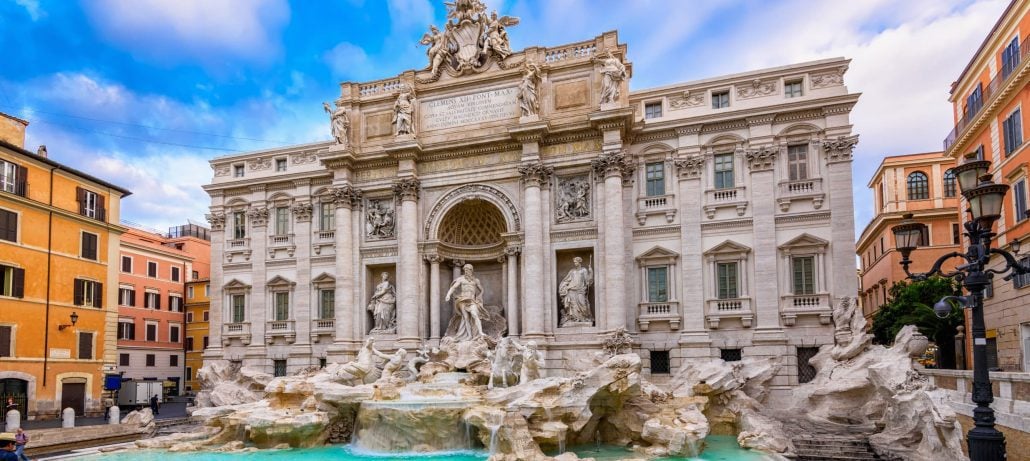
| 📍 Address | Piazza di Trevi. Get Directions |
| 🚉 Getting There | Take Line A to Barberini Station |
| 🔎 Guided Tour | Starting from $13 |
| ⏰ Suggested Duration | 1 hour |
A pleasant 12-minute promenade will take you to the Trevi Fountain. Built between 1732 and 1751 on the site of an ancient aqueduct this is one of Rome’s most well-known attractions and coveted photo spot by tourists from all around the world.
Immortalized in movies such as La Dolce Vita (1960), by Federico Fellini, the fountain stands majestically at 86 ft high and 161.3 ft wide, dazzling visitors with its lavish sculptures inspired by mythological and allegorical creatures.
One of the most striking features of Fontana di Trevi is Pietro Bacci’s statue of Oceanus, who stands atop a chariot pulled by sea horses and is accompanied by tritons.
Legend says that those who toss a coin into the fountain will one day return to Rome (we bet you’re not gonna miss this opportunity!)
Galleria Borghese & Villa Borghese Gardens
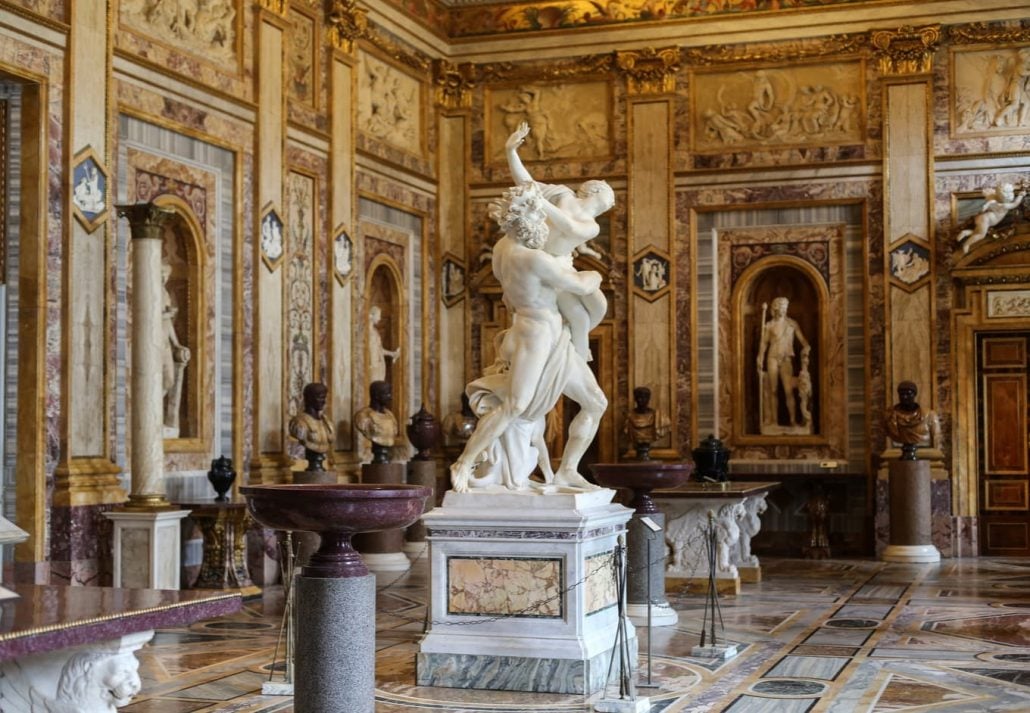
| 📍 Address | 00197 Rome. Get Directions |
| 🚉 Getting There | Take Line A to Spagna Station |
| 🤑 Ticket Price | Free entry for Villa Borghese Gardens |
| ⏰ Suggested Duration | 2 hours |
After taking in the beauty of the Trevi Fountain, make your move to Villa Borghese, which encompasses an 80-hectare lush park. Whether you’re a travel writer seeking an inspiring place to get your creative juices flowing or a couple in need of a romantic picnic, the gardens provide a gorgeous for an idyllic afternoon in Rome.
And no need to hurry! Grab a nice spot under the canopy of the trees and simply appreciate the surrounding nature while drinking a glass of wine.
As soon as you feel rested and peaceful enough, head over to the Borghese Gallery, which is home to a treasured collection of paintings, sculptures, and antiquities by renowned Italian artists such as Bernini, Caravaggio, Canova, and Raphael.
Piazza di Spagna & The Spanish Steps
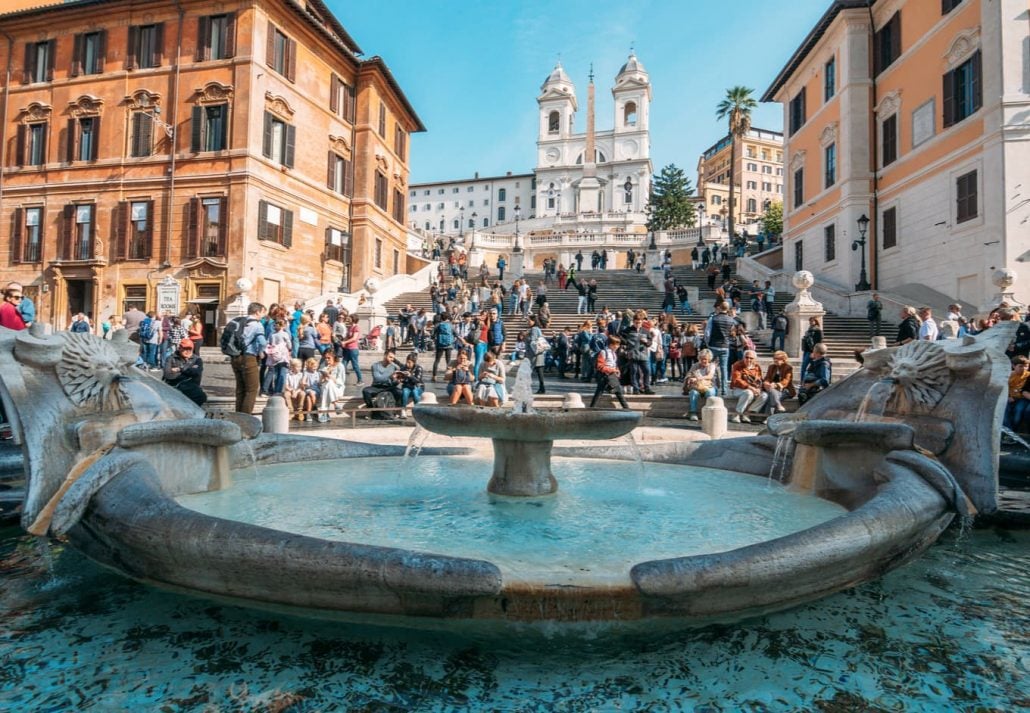
| 📍 Address | Piazza di Spagna, 00187 Roma RM, Italy. Get Directions |
| 🚉 Getting There | Take Line A to Spagna Station |
| 🤑 Ticket Price | Free to visit |
| ⏰ Suggested Duration | 1 h |
Grab a pistachio gelato at Come il Latte, and then head over to the bustling Piazza di Spagna. Rising up from the square, you’ll see an ample and majestic Rococo-style staircase named “Spanish Steps”, which is the perfect place to unwind, enjoy your dessert, and indulge in great views of Rome’s sunset.
Day 3: The Vatican & Castel Sant Angelo
St. Peter’s Basilica
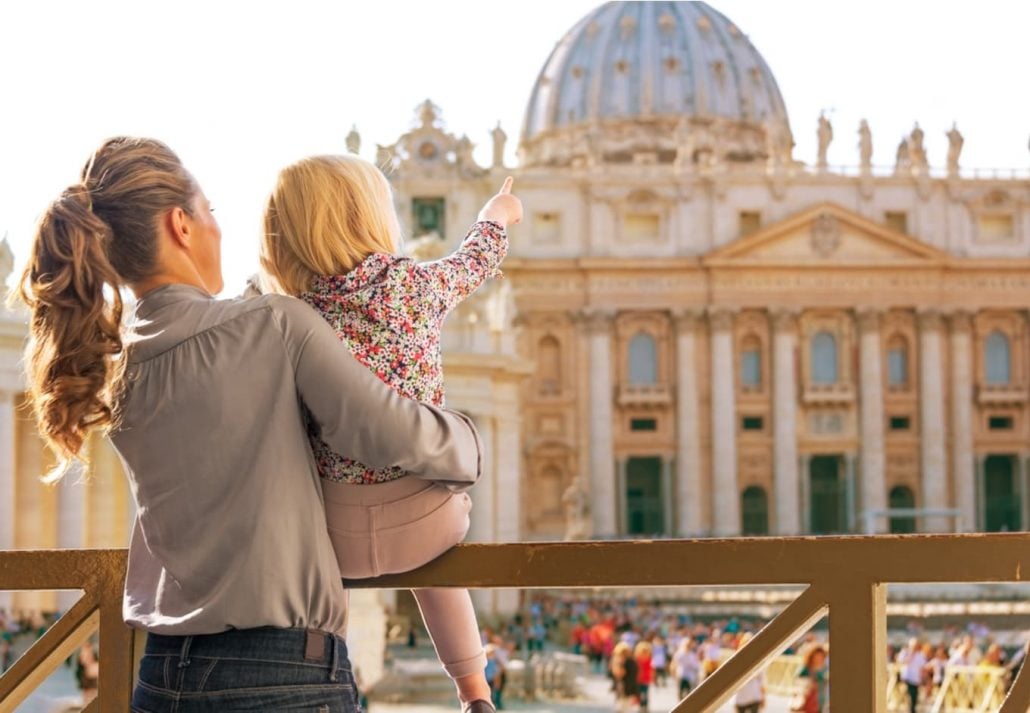
| 📍 Address | Piazza San Pietro, Vatican City. Get Directions |
| 🚉 Getting There | Take Line A to the Ottaviano-S. Pietro Station |
| ⏰ Suggested Duration | 2-3 hours |
Now that you’re already acquainted with Rome and its marvels, time for a tour of the Vatican. The first recommended stop is the St. Peter’s Basilica, located in the namesake square. Considered one of the most striking masterpieces of Renaissance architecture, the building was erected in the 4th-century over the tomb of St. Peter the Apostle, and it’s home to La Pietà, Michelangelo’s famous marble sculpture.
The Vatican Museums
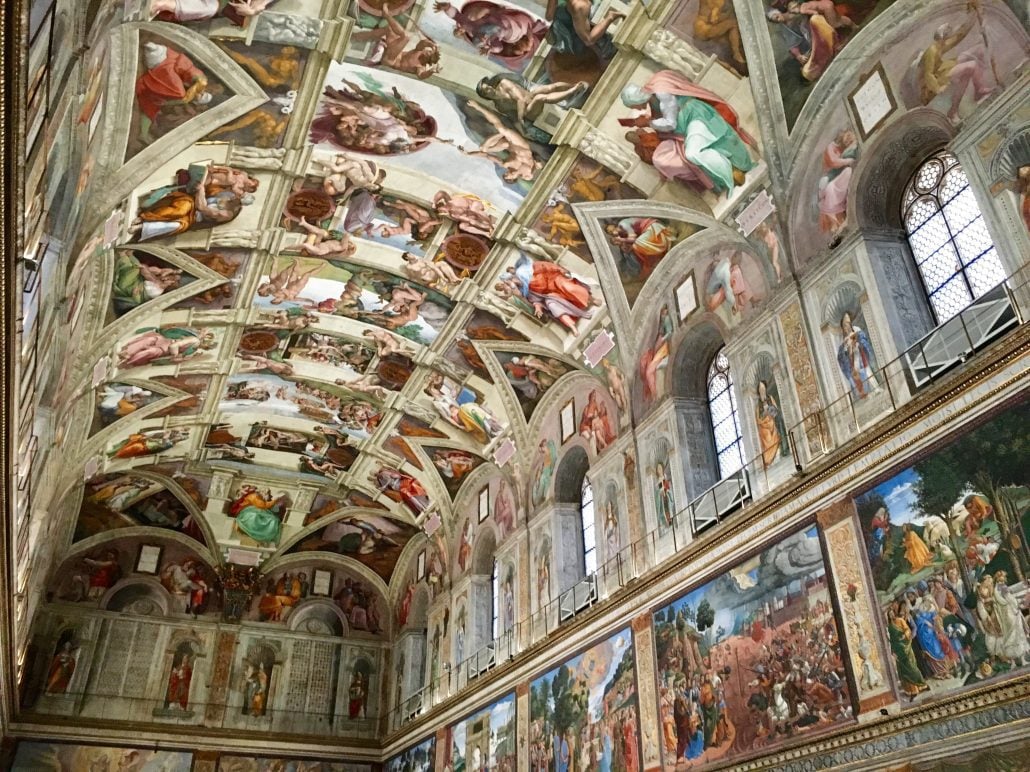
| 📍 Address | Vatican City. Get Directions |
| 🚉 Getting There | Take Line A to the Ottaviano-S. Pietro Station |
| ⏰ Suggested Duration | 2-3 hours in the Vatican Museums |
Despite being the smallest city-state in the world, the Vatican is home to endless wonders just begging to be discovered. There, you’ll find 54 galleries, also known as the Vatican Museums, which harbor over 70,000 artworks, making it a must-visit for art lovers.
Must-visit galleries in the Vatican include the Sistine Chapel, known for its lavish ceiling frescoes painted by Michelangelo, the Gallery of Maps, which boats a 120-meter-long corridor filled with frescoes representing the map of Italy, and the Raphael Rooms, part of the apartment of Pope Julius II.
Castel Sant Angelo
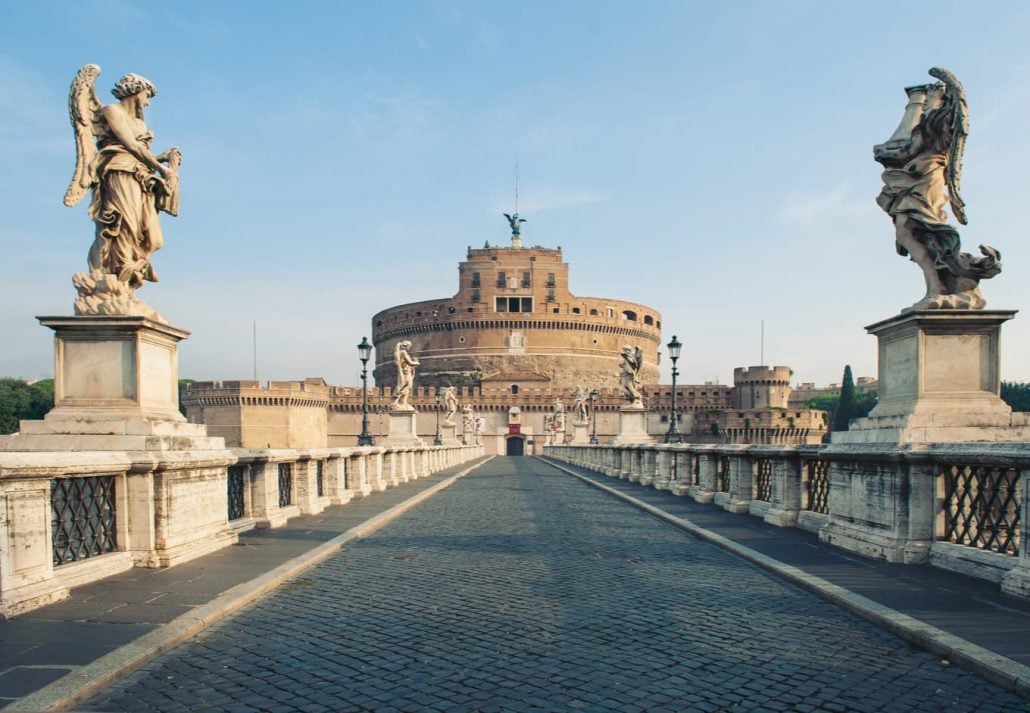
| 📍 Address | Lungotevere Castello, 50. Get Directions |
| 🚉 Getting There | Take Line A to the Ottaviano-S. Pietro Station |
| ⏰ Suggested Duration | 2-3 hours |
After a day well-spent discovering the artistic and cultural treasures of the Vatican, time to visit Castel Sant Angelo.
Perched on the right bank of the Tiber River, at the end of the legendary Ponte Sant’Angelo, the building was originally commissioned by the Roman Emperor Hadrian as a mausoleum for himself and his family.
Throughout its history, the building served several purposes like a fortress to protect the city during the Middle Ages, until it finally became a museum home to fabulous sculptures, architecture, frescoes, and more.
Day 4: Pantheon & Trastevere
Pantheon
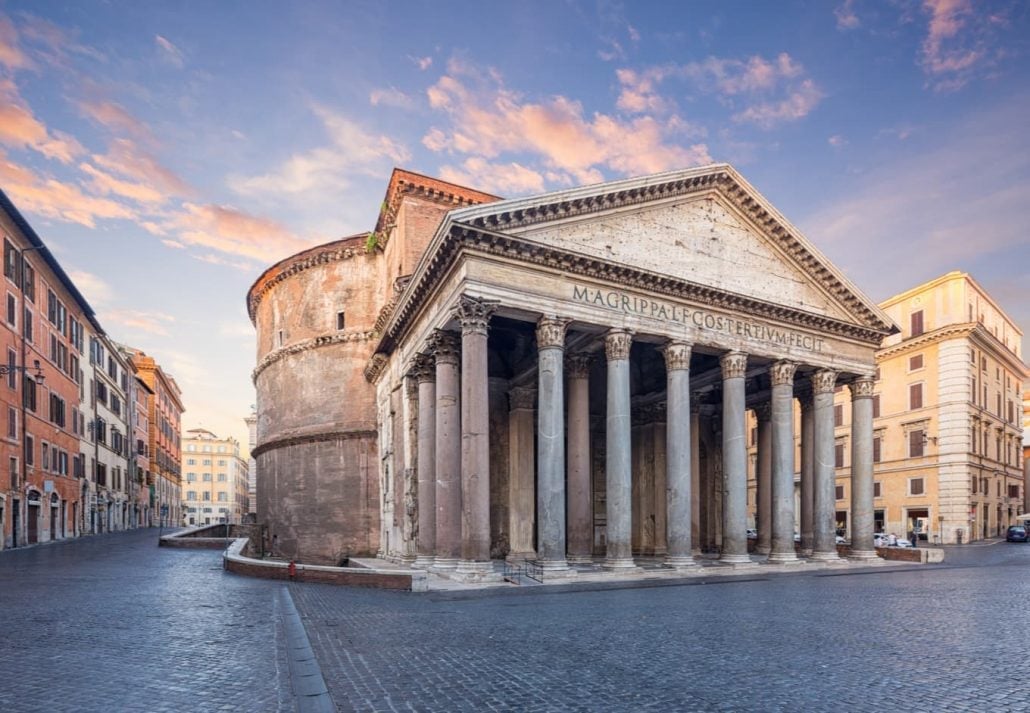
| 📍 Address | Piazza della Rotonda. Get Directions |
| 🚉 Getting There | Take Line A to Barberini Station |
| 🤑 Ticket Price | €5 for adults. Free for children |
| ⏰ Suggested Duration | 1-2 hours |
Budget travelers looking for free things to do in Rome can’t pass up the chance to visit the Pantheon.
Firstly built as a temple during the reign of Augustus (27 BC – 14 AD), the structure was rebuilt by emperor Hadrian in 126 AD., and it’s the best-preserved construction of ancient Rome.
While visiting the Pantheon, you’ll be in awe by the building’s immense domed ceiling, which is almost half the length of a football field, and the tombs of major Italian historical figures like the artist Raphael and the former Queen Margherita.
Mouth of Truth
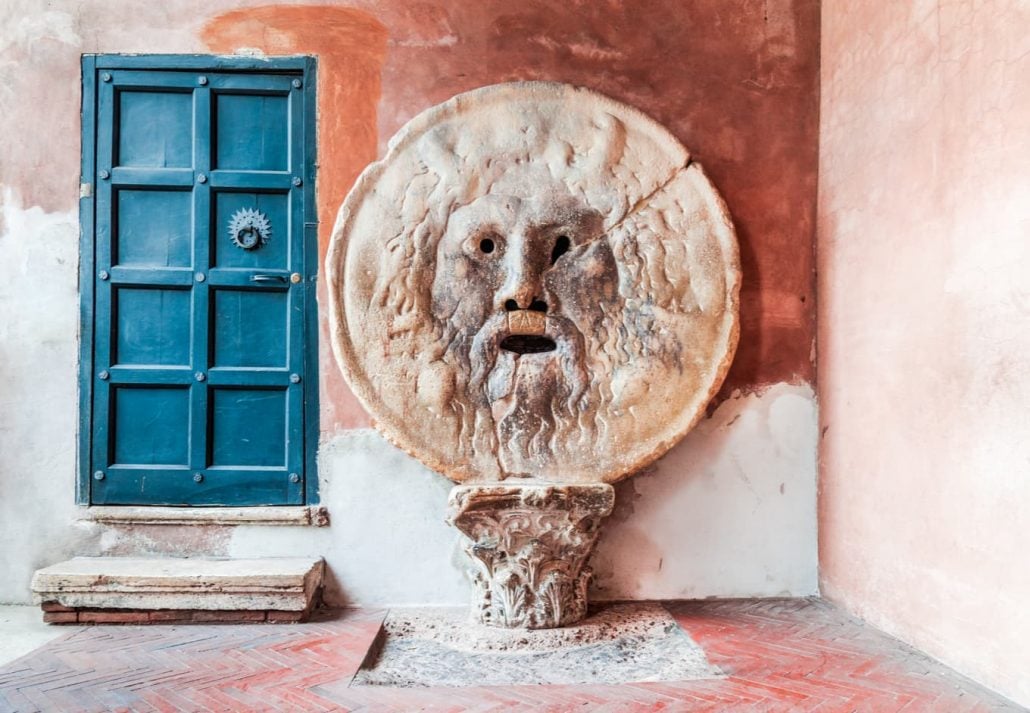
| 📍 Address | Piazza della Bocca della Verità, 18. Get Directions |
| 🚉 Getting There | The Line B to Circo Massimo |
| 🤑 Ticket Price | €2 per person |
| ⏰ Suggested Duration | 15-30 minutes |
On your last day in Rome, we recommend that you enjoy a leisure stroll from the city center (centro storico) to the Trastevere neighborhood. Along the way, your attention will be caught by intriguing details at almost every turn, so no need to rush during your promenade!
A must-see is Bocca della Verità, or Mouth of Truth, a giant marble mask with a diameter of 1.75 meters located in the portico of Santa Maria in Cosmedin Church. While little is known about the mask, it is believed that, during the Middle Ages, liars who placed their hands inside the sculpture would immediately lose it.
This legend of the Mouth of Truth became a well-known part of the Roman culture and is still a popular tall tale in the city.
Palazzo Corsini
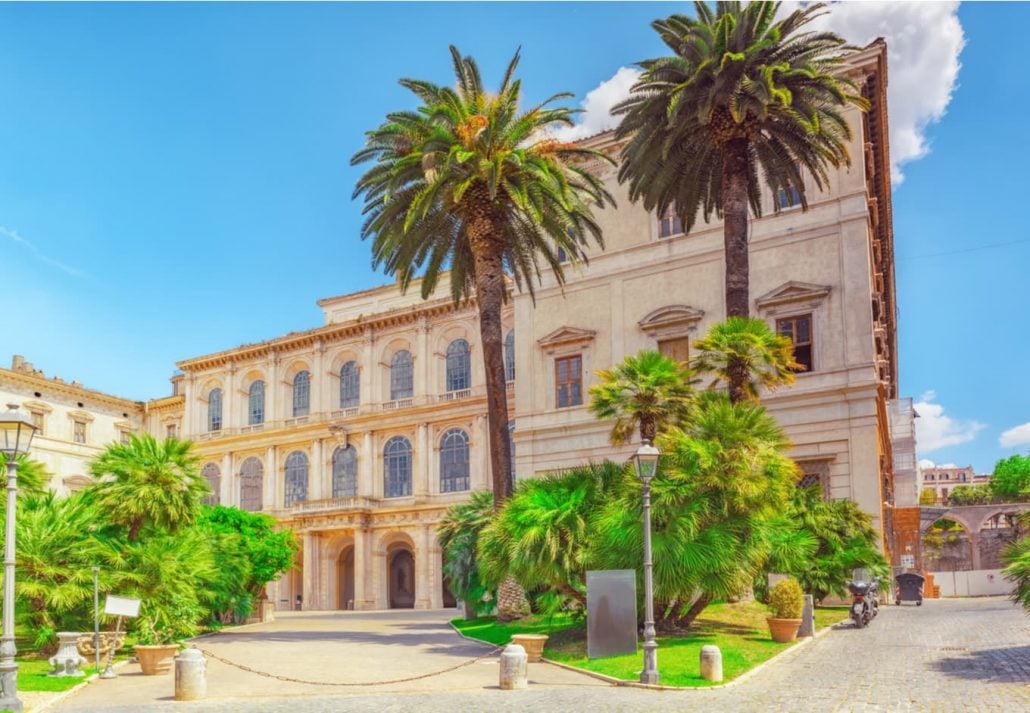
| 📍 Address | Palazzo Barberini, via delle Quattro Fontane, 13, and Palazzo Corsini, Via della Lungara, 10. Get Directions |
| 🚉 Getting There | The Line A or B to Palazzo Corsini |
| 🤑 Ticket Price | €17.50 + |
| ⏰ Suggested Duration | 2h |
If you’re seeking to take your lovely promenade to the next level, go for a scenic walk on the edge of the River Taber until you reach Palazzo Corsini. Set within a baroque-style palace built for the affluent Corsini family between 1730 and 1740, this stellar museum displays the only collection of paintings in Rome dating from the 1700s that remains intact to this day.
While snooping around the palazzo’s galleries, you’ll stumble upon masterpieces by Caravaggio, Reni, Guercino, Rubens, and van Wittel, as well as works by Italian artists from the 1500s and paintings by his contemporaries.
It’s one of the best things to do in Rome for art aficionados!
Trastevere Neighborhood
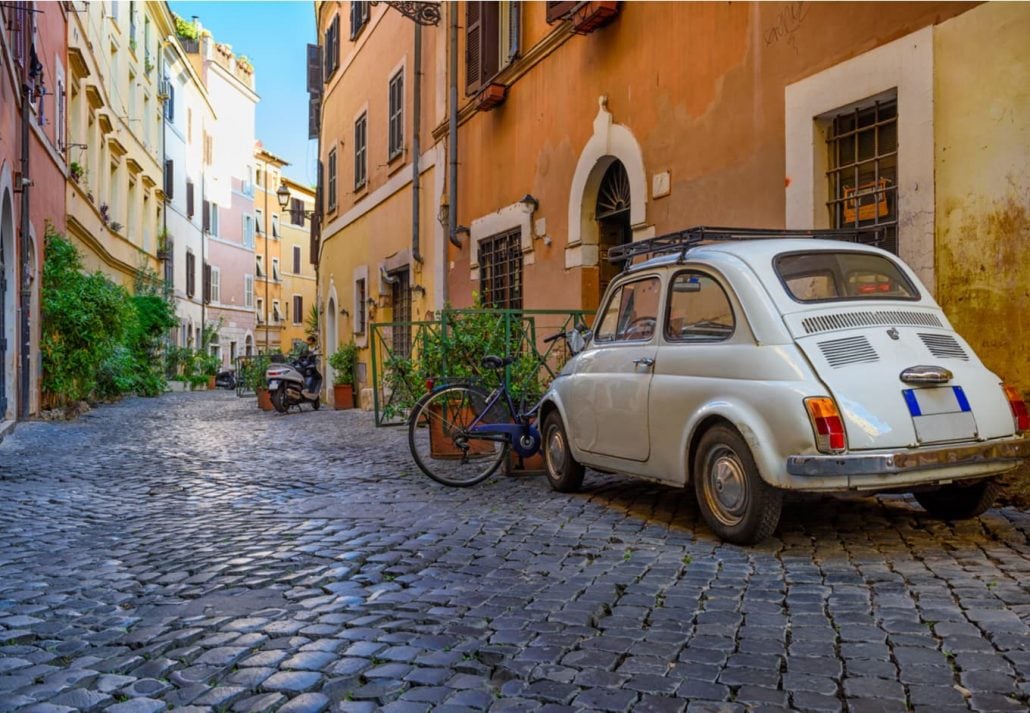
| 📍 Address | Trastevere. Get Directions |
| 🚉 Getting There | Take the bus H to Piazza Gioacchino Belli. |
| 🤑 Ticket Price | €6.50 + |
| ⏰ Suggested Duration | 2h |
If you have enough time, spend the rest of your day exploring Trastevere, which is one of the coolest neighborhoods in the city.
Gloriously located on the opposite bank of the river Tiber, south of the Vatican, this picture-perfect neighborhood is filled with narrow cobblestone streets, and charming colorful buildings decorated with cascading flowers.
There, make sure to stop by La Chiesa di Santa Cecilia, a gorgeous 5th-century church featuring Pietro Cavallini’s Giudizio Universale, and Orto Botanico, a hidden gem botanical garden home to up to 8000 species.
Foodies visiting Trastevere will be happily surprised, as the neighborhood boasts some of the best restaurants and trattorias in Rome. A must-try? Nannarella Osteria, a family-run eatery where you can find an array of authentic Roman dishes like the cacio e pepe pasta, as well as a heavenly carbonara.
Unarguably one of the best ways to end your day in Rome!
Frequently Asked Questions
How many days in Rome?
Rome itinerary 4 days is generally considered the minimum amount of time needed to see the city’s top attractions and get a good feel for the city. With Rome in 4 days, you can visit iconic sites like the Colosseum, Vatican Museums, Trevi Fountain, and Pantheon while also having time to explore neighborhoods, enjoy the food and culture, and see some lesser-known gems.
Is it possible to see Rome in a day?
While you can see some major attractions in a day, it will be a packed schedule. Plan to visit the Colosseum, Roman Forum, Pantheon, Trevi Fountain, and Spanish Steps. You can also stroll through central Rome to soak in the atmosphere
Where can I find a map of Rome attractions?
You can find maps of Rome attractions online or in print at hotels and tourist information centers. Consider downloading a map app for easy navigation during your visit.
What should I know before taking a trip to Rome?
Before your trip, research the main attractions and cultural customs. Learn basic Italian phrases, know local etiquette, and understand the city’s public transportation system. Ensure you have comfortable walking shoes and plan your meals around local cuisine.
How can I make the most of 2 days in Rome?
In 2 days, focus on seeing the must-visit sights. On day one, visit the Colosseum, Roman Forum, and the central area (Pantheon, Trevi Fountain, Spanish Steps). On day two, spend your time in Vatican City and consider a stroll through Trastevere.
